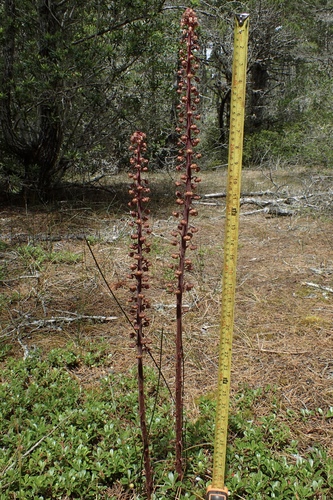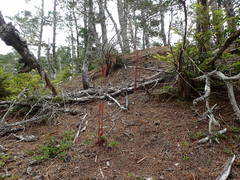Woodland Pinedrops
Pterospora andromedea
Location: Bandon State Natural Area (BSNA)
Bandon, Oregon
Glandular hairs exude a sticky substance to which small insects adhere.
Primary Inquiry
Do Woodland Pinedrops secrete enzymes that digest insect protein
and incorporate amino acids in their tissue to capture nitrogen?
Is the Woodland Pinedrop carnivorous ... "protocarnivorous"?
by: Keith Franklin Saylor

This plant is the tallest I've observed in BSNA,
measuring almost 90cm (around 3 feet).
Woodland Pinedrops Photo EssayClick on Images to View Larger Photos. |
|
First Published August 2025




















